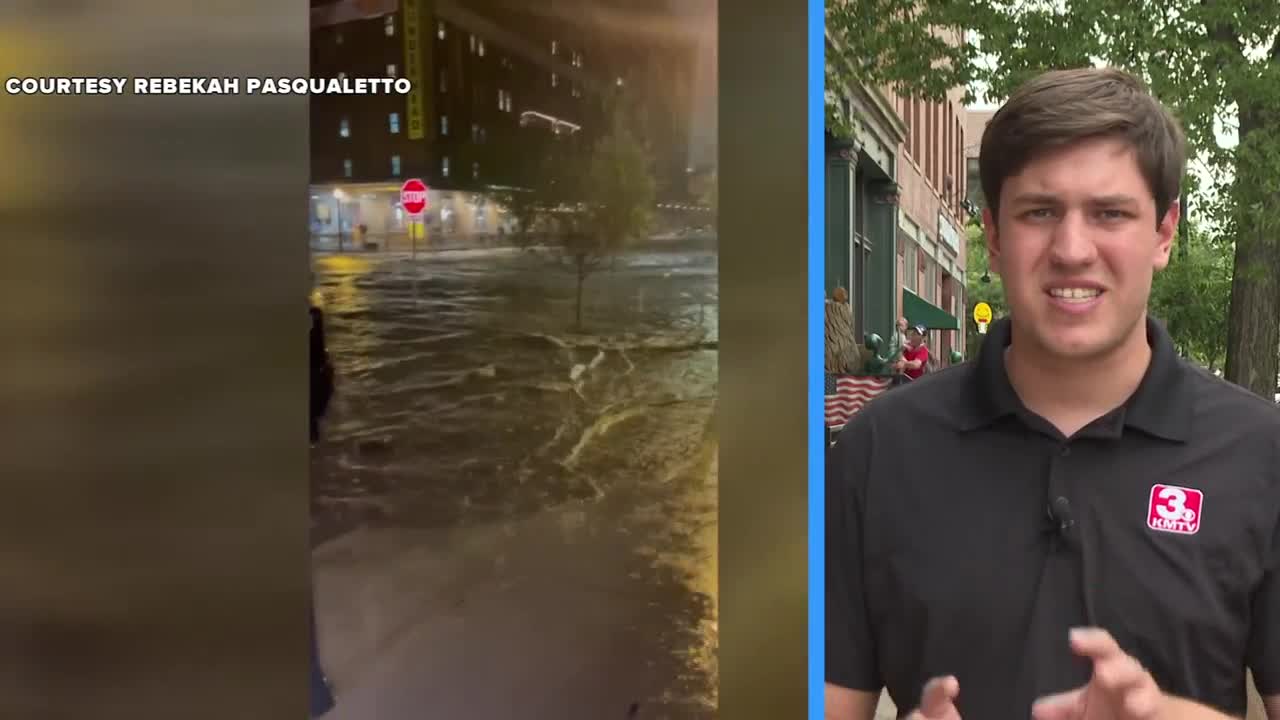The headlines are littered with tragic stories from across the country. The stories? Horrific flooding. The Texas flood on July 4th has become one of the deadliest non-tropical floods in recent US history. Other floods have similarly hit the news in New York City and in Kansas City. These are only the latest in a historic year for flooding. The National Weather Service has issued more Flood Alerts in 2025 than in any other year up to this point.
Yet, the Omaha area has remained outside the bounds of flash floods this season. There has been some flooding, notably along Saddle Creek from a storm in April, but we have missed out on the major flood events. Why is that? Luck? Or something else?
Flash flooding requires two simple ingredients to occur: rainfall intensity & duration. Yet, these two have to align just right to produce a major flash flood event.
We have seen the rainfall intensity.
For the science nerds, here is why: we use the term Precipitable Water Values (PWATs) to measure the water content in the air. The number, measured in inches, comes from if we theoretically wring out the atmosphere of all its water, it would be the PWAT value. For example, if the PWAT value for Omaha was 1.5", it means that if the atmosphere was sapped of all its water, we would have 1.5" of water. It is NOT indicative of how much rainfall one will see and should not be used in rainfall forecasts. As a general rule of thumb, the higher the value, the heavier the rain.
For our viewing area, a PWAT value of around 1.5" is standard for a July day. Anything over 2" is considered excessive moisture and quickly raises the alarm on heavy rain events. So far in Summer 2025, Omaha (alongside much of the country) has sat in that 2" range, meaning even smaller thunderstorms can dump copious amounts of rainfall.
Those with backyard rain gauges likely have noticed this, where a storm can drop 1" of rain in under an hour, which is excessive. We have seen this rainfall intensity. So, why no flooding?
The missing link is rainfall duration. The storms that passed over eastern Nebraska and western Iowa have done just that: passed over. They don't sit around and dump rain; they move at a fairly quick pace. For flash flooding, we usually have to see storms either move slowly or it's one storm after another. Our storms this season have not done that; they hit and they move on.
This has been our saving grace, and it's mostly just been luck.
It's important to remember that Omaha can and does have significant floods. Take May of last year, when Omaha received 6" of rain in a night, which led to significant flooding. A more dramatic example would be August 2021, when the Old Market flooded.
So, have a flood safety plan in place, and heed any warnings from the National Weather Service.




